Whenever there’s an opportunity to speak with Matthew Sweet, Popdose jumps on it, and there are good reasons for that. First of all, Sweet is an interviewer’s dream. He’s honest and forthcoming, and has been in the company of so many equally talented people throughout his career. He’s prepping the release of his latest, Tomorrow Forever. The effort, financed through crowdfunding, marks his first songwriting foray since 2011’s Modern Art. He’s hardly been off the radar, having completed his trilogy of Susie and Sid cover albums, Under The Covers with Susanna Hoffs.
Tomorrow Forever comes with a certain level of reflection and the songs were written during times of great change for Sweet, as he himself will detail. But that does not mean the record is a long, dour treatise on the transitions of our lifetimes. Sweet knows how to kick in the rock, and does so with ease on the new songs.
This album is your first of original songs in some time, and was spurred on with your Kickstarter campaign. What was that process like for you, and your process in getting back to songwriting?
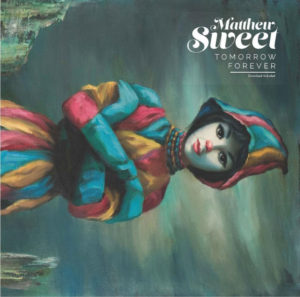 I’ve been thinking about doing a Kickstarter campaign for a long time. Once I knew I would do that campaign, I was definitely going to write songs and make a record, so I was planning to do it. Because I was planning this humongous move from Los Angeles back out to Nebraska, where I grew up, there was a lot going on (at that time). But now I felt like, now I can make a record once I get settled there. It was kind of the natural end to the move for me.
I’ve been thinking about doing a Kickstarter campaign for a long time. Once I knew I would do that campaign, I was definitely going to write songs and make a record, so I was planning to do it. Because I was planning this humongous move from Los Angeles back out to Nebraska, where I grew up, there was a lot going on (at that time). But now I felt like, now I can make a record once I get settled there. It was kind of the natural end to the move for me.
But having the Kickstarter thing sort of helped to put a fire under me, but it also resulted in me spending a little longer making the record than everybody had wished. I felt especially beholden to (supporters) to make sure it was really good. So I recorded multiple batches of songs that, maybe, I wouldn’t have normally done quite the same way.
It didn’t take a long time because I worked a lot on any one thing…it just took a long time because I did several batches, and there really were a lot of songs that I finished in order to pull from it and make the record.
How has having your home studio affected making new music? I imagine it affords a lot more opportunities that, say, having to book one or many studios and attempting to get everyone there to work.
It’s great, it takes away a lot of pressure, and when it is pressure about money, when that’s relieved, it’s pretty great! I actually have worked in my home studio before here, but back in Los Angeles, working on the Under The Covers records with Susanna Hoffs. We did all that stuff in my house or in hers. So, I have done it a lot now. It’s just what’s naturally comfortable for me. I’m in charge, I do the engineering, the producing, most of the playing, and it’s just kind of an easy cockpit where I can sit and make music.
The one thing that’s a little different with this record is that there are more people playing on it who did it remotely. We’d already been doing that (Susanna and I on the last record we did, Under The Covers Volume 3). She’d do stuff at her house, send it over to me and I’d fly it in the sessions I had at my house. But this time, being out here in Omaha, I ended up reaching out in all directions for people to play on the record.
That worked really nicely. That’s another aspect of this process that’s really fun. For me, it’s kind of like Christmas whenever someone sends something they played. I don’t know what it is yet. I didn’t give anybody really specific direction on what they should do. I just said, play whatever you feel. Even I don’t know what it’s going to be like until I receive it.
Do you find that setup works better for you? I imagine that when everyone is all in the same space at one time, there could be more pressure to be overly directorial, and to fuss it more, rather than being able to be free with the material.
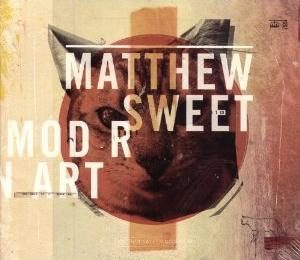 Possibly. Yeah, I imagine it would, just by the nature of things. My method is probably a little more like found art, you know? If you have a group and they’re all in the studio and everybody’s playing live, it will take on a different quality. My thing is different in that I create this core, which I got together with drums, bass, and some guitars, and singing on each thing before I sent it out. I sent this thing that was lacking only what this person does. It’s more like having someone come in to do a session on a record than recording live with a bunch of people.
Possibly. Yeah, I imagine it would, just by the nature of things. My method is probably a little more like found art, you know? If you have a group and they’re all in the studio and everybody’s playing live, it will take on a different quality. My thing is different in that I create this core, which I got together with drums, bass, and some guitars, and singing on each thing before I sent it out. I sent this thing that was lacking only what this person does. It’s more like having someone come in to do a session on a record than recording live with a bunch of people.
But that’s always been the way I’ve done it. I’ve usually — when I record — I play guitar with a drummer, usually my friend Ric Menck who drums on this record. Then I overdub bass because I’m a bass player, I’ll overdub another guitar or some other defining instrument, then I’ll sing some stuff so there’s enough of a guide for singing to have it be fun to work on the song.
You’ve always surrounded yourself with great players. I think that’s become a signature of your records. So who is appearing with you on Tomorrow Forever?
There’s a guy named John Moremen who plays with a group called the Orange Peels. He’s out of San Francisco. We met him when they were opening up for me on a tour a couple years back. There was something about John’s playing that clicked in my head and I said, you know, I’m going to make a record and I’d love you to try playing on something. He was open to it, so he was a person I sent stuff to and had no idea what to expect…but he just came through again and again. Eventually he came out here and spent a week doing some playing.
Then, from New York, there’s Jason Victor and he was recommended to me by my most recent guitar player, Dennis Taylor. He’d seen Jason play somewhere and thought, “He’d be good with Matthew.” Dennis couldn’t do the record because of some stuff going on at home in Los Angeles. I asked his opinion, if he knew somebody.
I didn’t meet Jason before the record. It was very cryptic about how we went back and forth. It was like, you know, I’d say play on whatever you want. He’d say, I really like this song. I’d say, you played it great — thanks. Just very cryptic. Eventually I met him at a show in New York. John went on tour with us last year. This year, Jason’s going to give it a shot. He’s a different kind of player, probably more like a traditional New York guy like Richard Lloyd. John Moremen’s more like Robert Quine in that he has more of a jazz influence.
Val McCallum — I got to call him by his full name, Valentine, on the record! — was the third guitar player that came in on it and did a lot of great interaction with John’s stuff. Val also did a few tracks all on his own, and tended to play more slide guitar, some more novelty-sounding parts that were sprinkled in, which made for some magic on their own. All three of those guys as guitar players were really integral.
I was lucky enough to get Rod Argent from The Zombies to play piano on a couple songs. I’d seen them play their classic album Odessey and Oracle and got to meet him backstage. It took him many, many months but we got him to actually get an engineer to his house and record some grand piano. That’s on a song called “Hello” and another one called “Haunted.” I just loved the stuff he played. It was just so great and reminded me of Nicky Hopkins who I got to play with years and years ago (on the Altered Beast album). He was also a classic, early-’60s English piano player.
How did that come about?
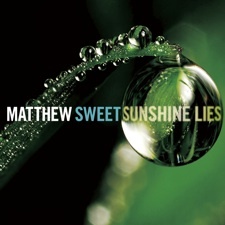 Well, you know, I went to see the show. Actually, my wife and I flew to Denver to go and see them. A friend if mine, Darian (Sahanaja, from the Wondermints) who plays a lot with Brian Wilson was the musical director for the Odessey and Oracle part of the show. So a person I knew was there, and so I was relieved! And (Darian) was so nice and knew I was super-nervous. He introduced me to the band and I had that chance to meet Rod.
Well, you know, I went to see the show. Actually, my wife and I flew to Denver to go and see them. A friend if mine, Darian (Sahanaja, from the Wondermints) who plays a lot with Brian Wilson was the musical director for the Odessey and Oracle part of the show. So a person I knew was there, and so I was relieved! And (Darian) was so nice and knew I was super-nervous. He introduced me to the band and I had that chance to meet Rod.
I sort of blurted out “I’d love it if you’d do something on my record.” I don’t think he had any idea who I was, but he was open to the idea. i kept in touch with them through their management over many months. It took kind of a long time. It was like one of those things where it seemed like it was going to happen, but was going on and on and hadn’t happened, so I didn’t want to tell anyone it was going to happen. But it was really a joy when it worked out. I guess he related enough to the music so that he wanted to do it. The way he played along with it showed he was very sensitive and in tune with what the songs were.
Some of the materials that have been sent to the press regarding Tomorrow Forever mention that this album comes after the passing of your mom. First off, our condolences, of course. How did this affect the songs you wrote for the record?
I was in a really good space with my mom before she died. It was, maybe, nine months before I’d moved back to Omaha that she passed away. It was just a few weeks after the Kickstarter campaign had wrapped up. It all sort of gave me a numb feeling, and slowed down my ability to start working on the record. Even the things that get into my feelings about her took a little bit of time to come out, but it’s in there.
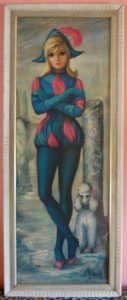 Songs like “You Knew Me.” My mother and I were very alike in a way. I suffer from bi-polar disorder and I’m 99.9999% percent sure that she did too, although she was never diagnosed. We had a close relationship, but one that was strangely sort of fraught with a kind of a tension. I know she’s in that particular song for a couple of reasons. One of those is, like, “You Knew Me” really does refer to her in a sense of that “I’ve got your number…I know you because you and I are alike.”
Songs like “You Knew Me.” My mother and I were very alike in a way. I suffer from bi-polar disorder and I’m 99.9999% percent sure that she did too, although she was never diagnosed. We had a close relationship, but one that was strangely sort of fraught with a kind of a tension. I know she’s in that particular song for a couple of reasons. One of those is, like, “You Knew Me” really does refer to her in a sense of that “I’ve got your number…I know you because you and I are alike.”
In the end of the song when the lyrics are saying, “Afraid of myself, afraid of you, afraid of yourself, afraid of me…” That always made me feel like tearing up as I was working on the record. I know that touches on the trouble between us, but like I said, I was in a really good place (at that time). I didn’t have unresolved feelings. We were very close.
There are some other spots that get into death and dying a little bit. Even the song “Nobody Knows” has this part about “walking into the light.” It’s sort of toying with that concept of death as well. But I really also wanted to make a strong, upbeat record. That really was my plan from the beginning before she passed away, and so I did make an effort not to get too bogged down in grief being the theme that guided the album the most. If anything, those were some of the last songs I did…the songs that were slower and moodier.
On that last batch of recordings, Debbie Peterson from The Bangles played drums on, and it was like all the ideas were really slow. She had to play on all the super-slow stuff! The only one that more upbeat — and actually didn’t make it onto the record — was the song “Come Correct.” Mostly I was going after moody, slower stuff by that last batch. (Debbie) helped bring home that part of it.
One of the things I’ve always appreciated about your albums is that you seem to really have an interest in the whole of the album, that there is an identity to the packaging that relates to the music. I’m thinking at the moment about the cover art for In Reverse (1999) as an example. That’s also very much in line with aspects of the ’60s aesthetic. On this album, that connection is much more tangible, specifically in regard to the title.
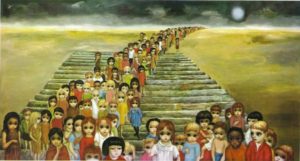 “Tomorrow Forever” came from a title of a Margaret Keane painting, and on In Reverse, that is a Keane painting on there. Originally I planned to try to use the painting “Tomorrow Forever,” which is the one with, like, a million of the kids marching through this surrealist background into the foreground, right up close. It represented the unending flow of time and humanity.
“Tomorrow Forever” came from a title of a Margaret Keane painting, and on In Reverse, that is a Keane painting on there. Originally I planned to try to use the painting “Tomorrow Forever,” which is the one with, like, a million of the kids marching through this surrealist background into the foreground, right up close. It represented the unending flow of time and humanity.
In the end, I wasn’t able to get the rights to use the painting itself. I had to switch gears. The artist I used went by the name Maio. I’ve always wanted to use her paintings. I know the daughter of the artist and she posed for all those harlequin paintings. Maio’s also very famous as a print artist, and worked in the same era as Keane. If you go to flea markets, antique shows, and junk stores, you’ll still see Maio prints just everywhere. There were just thousands and thousands of them sold.
(Maio) was another artist who, back twenty-odd years ago, my wife and I started looking for original paintings by. I own all the paintings that were used in the artwork for Tomorrow Forever. They’re all mostly these life-sized, 48 inch tall oil-on-canvas paintings.
I do like packaging that goes with the record. That comes from when I was young, having vinyl albums, and the packaging meant a lot. You looked at it in a way that you might not necessarily do now.
So what does it mean to you, having this connection to the context of vinyl albums, to be able to have them again as a way of getting your music out there?
I love it. It hearkens back to a time when I fell in love with records as a kid. I don’t really know how much vinyl we sell in terms of actual giant numbers. Yet it is a great thing now that everyone wants to make vinyl and it seems like fans really want to have it. It did sort of start coming back around the time we did Sunshine Lies. Since then, I think everything I’ve done has also been on vinyl.
Thanks again to Matthew Sweet for taking the time to talk with Popdose.com, and to Angie Carlson of Propeller Publicity for facilitating our discussion. You can find out more about Tomorrow Forever at: www.matthewsweet.com





Comments